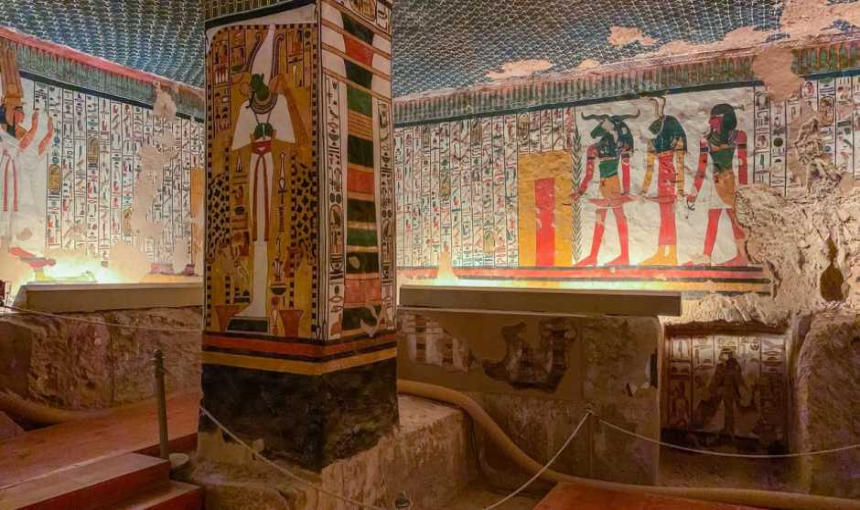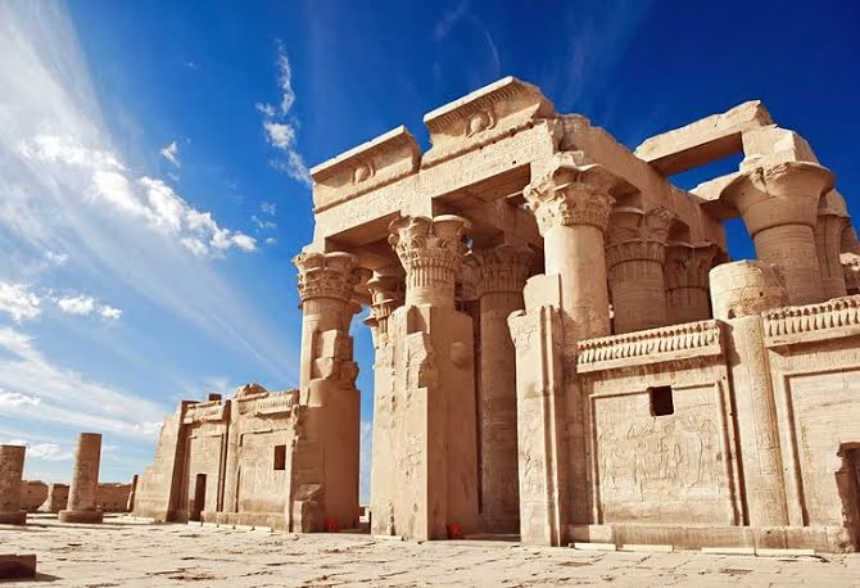Introduction:
While the Great Pyramids of Giza and the temples of Luxor and Karnak draw millions of visitors annually, Egypt is home to numerous lesser-known sites that offer a glimpse into the country’s rich history and culture. These Egypt’s hidden gems, often overlooked by tourists. Provide a more intimate and unique experience for those willing to venture off the beaten path. This guide will explore some of the lesser-known temples and sites along the Nile. From the ancient city of Abydos to the remote temples of the Nubian region.
Egypt’s Hidden Gems: Discovering the Lesser-Known Temples and Sites Along the Nile.
Why Explore Lesser-Known Sites?
- Avoid the Crowds: Visiting less popular sites allows for a more peaceful and reflective experience, away from the throngs of tourists that flock to Egypt’s major attractions.
- Rich Historical Significance: Many of these sites played crucial roles in Egypt’s history and offer unique insights that you won’t find at the more famous locations.
- Unique Cultural Experiences: Exploring these hidden gems gives you a chance to interact with local communities and experience Egypt’s culture in a more authentic setting.
Top Hidden Gems Along the Nile
1. Abydos Temple Complex
- Location: Sohag Governorate, about 160 km north of Luxor.
- Historical Significance: Abydos is one of the oldest and most important archaeological sites in Egypt, serving as a major cult center for the god Osiris.
- Key Features:
- Temple of Seti I: Known for its well-preserved reliefs and the famous Abydos King List, which details the lineage of pharaohs.
- Osireion: An underground structure believed to be a symbolic tomb of Osiris.
- Temple of Ramesses II: Smaller but equally impressive, with detailed carvings and a unique design.
- Why Visit: Abydos offers a deep dive into ancient Egyptian religion and the cult of Osiris, with some of the best-preserved reliefs in the country.
2. Dendera Temple Complex
- Location: Qena Governorate, about 60 km north of Luxor.
- Historical Significance: The Dendera Temple Complex is one of the best-preserved temple complexes in Egypt, dedicated to Hathor, the goddess of love, beauty, and motherhood.
- Key Features:
- Temple of Hathor: The main attraction, featuring stunning columns, a zodiac ceiling, and the famous Dendera Light relief.
- Roman Birth Houses: Small temples dedicated to the birth of the gods.
- Crypts: Hidden chambers beneath the temple containing religious texts and artifacts.
- Why Visit: Dendera’s intricate artwork and unique features like the zodiac ceiling make it a must-visit for history and art enthusiasts.
3. Kom Ombo Temple
- Location: Aswan Governorate, on the east bank of the Nile, about 50 km north of Aswan.
- Historical Significance: Kom Ombo is unique as it is a double temple, dedicated to both the crocodile god Sobek and the falcon god Horus.
- Key Features:
- Double Temple: Symmetrical design with two parallel sanctuaries, one for each god.
- Nilometer: An ancient device used to measure the Nile’s water level, crucial for agriculture.
- Crocodile Museum: Nearby museum displaying mummified crocodiles and other artifacts related to Sobek.
- Why Visit: The dual dedication and well-preserved reliefs make Kom Ombo a fascinating site, especially for those interested in ancient Egyptian religion.
4. Medinet Habu
- Location: Luxor, on the west bank of the Nile.
- Historical Significance: Medinet Habu is the mortuary temple of Ramesses III and one of the best-preserved temples in Thebes.
- Key Features:
- Mortuary Temple: Features large columns, detailed reliefs depicting battles, and the king’s divine status.
- Enclosure Walls: Massive walls that protected the temple complex, adorned with intricate carvings.
- Sacred Lake: Used for ritual purposes, surrounded by other small chapels and shrines.
- Why Visit: Medinet Habu offers a comprehensive look at the architectural and artistic achievements of the New Kingdom, with fewer crowds than the more famous temples.
5. El Kab
- Location: About 90 km south of Luxor.
- Historical Significance: El Kab is an ancient city that dates back to pre-dynastic times and served as an important religious and strategic center.
- Key Features:
- Temple of Nekhbet: Dedicated to the vulture goddess Nekhbet, with unique inscriptions and artwork.
- Rock-Cut Tombs: Tombs of nobles featuring vivid wall paintings depicting daily life and religious rituals.
- Fortress: Massive mudbrick walls that once protected the city, providing insight into ancient Egyptian military architecture.
- Why Visit: El Kab is a treasure trove of history, with ruins that span thousands of years, offering a comprehensive view of Egypt’s development from prehistory through the pharaonic period.
6. Nubian Temples of Lake Nasser
- Location: Various sites along Lake Nasser, including Abu Simbel, Amada, and Wadi es-Sebua.
- Historical Significance: These temples were relocated to save them from flooding when the Aswan High Dam was built.
- Key Features:
- Abu Simbel: The most famous of the Nubian temples, featuring colossal statues of Ramesses II and a stunning interior.
- Temple of Amada: The oldest of the relocated temples, known for its vivid reliefs.
- Wadi es-Sebua: Dedicated to Ramesses II, with a distinctive avenue of sphinxes leading to the temple entrance.
- Why Visit: The Nubian temples offer a unique blend of Egyptian and Nubian cultures, with breathtaking views over Lake Nasser.
Check the Best Nile Cruises:
- Standard 5 Stars Nile Cruise.
- Deluxe 5 Stars Nile Cruise.
- Luxury 5 Stars Nile Cruise.
- Ultra Luxury 5 Stars Nile Cruise.
- Lake Nasser Nile Cruise.
- Dahabyia Nile Cruise.
- Felucca Adventure Nile Cruise.
- Cairo Dinner Cruise.
Tips for Visiting Lesser-Known Sites
- Hire a Local Guide: A knowledgeable guide can provide valuable insights and enhance your understanding of these lesser-known sites.
- Plan Ahead: Some of these sites are in remote locations, so it’s essential to plan your visit carefully, including transportation and accommodation.
- Respect Local Customs: When visiting less touristy areas, be mindful of local customs and traditions to ensure a respectful and enjoyable experience.
- Pack Essentials: Bring water, snacks, and sunscreen, especially when visiting remote or less-developed areas.
- Combine with Major Sites: For a well-rounded experience, consider combining visits to these hidden gems with Egypt’s more famous attractions.
Egypt’s hidden gems along the Nile offer a unique and enriching experience for those willing to explore beyond the well-trodden paths. These lesser-known temples and sites provide an intimate glimpse into Egypt’s ancient history and culture, far from the crowds of more famous destinations. Whether you’re a history buff, an adventure seeker, or simply looking for a different perspective on Egypt, these sites are well worth the visit.
Ready to uncover Egypt’s hidden gems? Book a Nile cruise that includes visits to these lesser-known sites and embark on a journey of discovery. Explore our curated Nile cruise packages today and start planning your adventure!
Follow us on Facebook, Instagram, Pinterest and X.
Don't miss checking our other Egypt Nile Cruises




